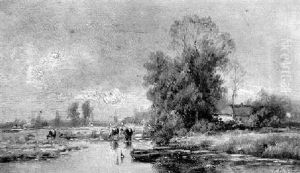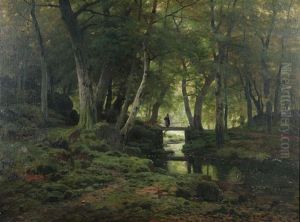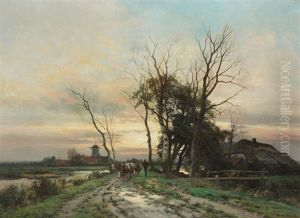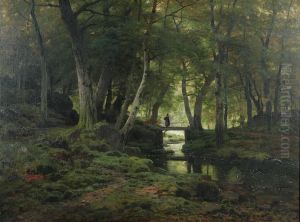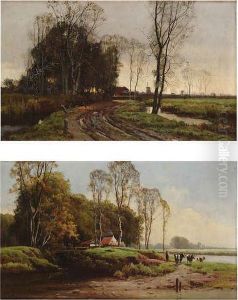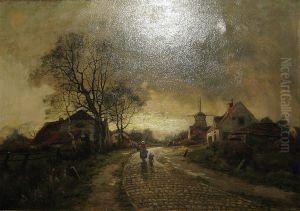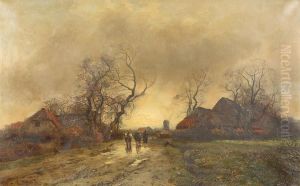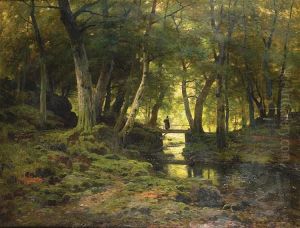Ferdinand De Prins Paintings
Ferdinand De Prins was a Belgian artist known for his contributions to the Symbolist movement, which emerged in the late 19th century. Born in 1859, De Prins was part of a cultural milieu that was reacting against the materialism and naturalism prevalent in the art and literature of the era. His works are characterized by a strong emphasis on emotion, spirituality, and the exploration of the human psyche.
De Prins received his artistic training at the Royal Academy of Fine Arts in Antwerp, where he was influenced by the works of Gustave Moreau, Jean Delville, and Fernand Khnopff, other prominent figures in the Symbolist movement. His style evolved over the years to incorporate elements of mysticism and mythology, often featuring allegorical themes and dream-like imagery.
Throughout his career, Ferdinand De Prins exhibited his work in various shows across Europe, gaining recognition for his unique approach to Symbolism. His paintings and drawings often depict scenes that seem to be suspended between reality and the ethereal, inviting viewers to interpret their complex symbolism and rich emotional landscapes.
De Prins was not only a painter but also involved in the broader cultural movements of his time. He contributed to the literary and artistic discourse of the period, participating in symposiums and writing on the role of art in society. His belief in the transformative power of art to access deeper truths about the human condition was evident in both his works and his writings.
Sadly, Ferdinand De Prins's life was cut short when he died in 1912. Despite his relatively brief career, his contributions to the Symbolist movement left a lasting impact on the art world. Today, his works are appreciated for their intricate symbolism and profound beauty, offering a window into the spiritual and emotional explorations that defined the Symbolist movement at the turn of the 20th century.

